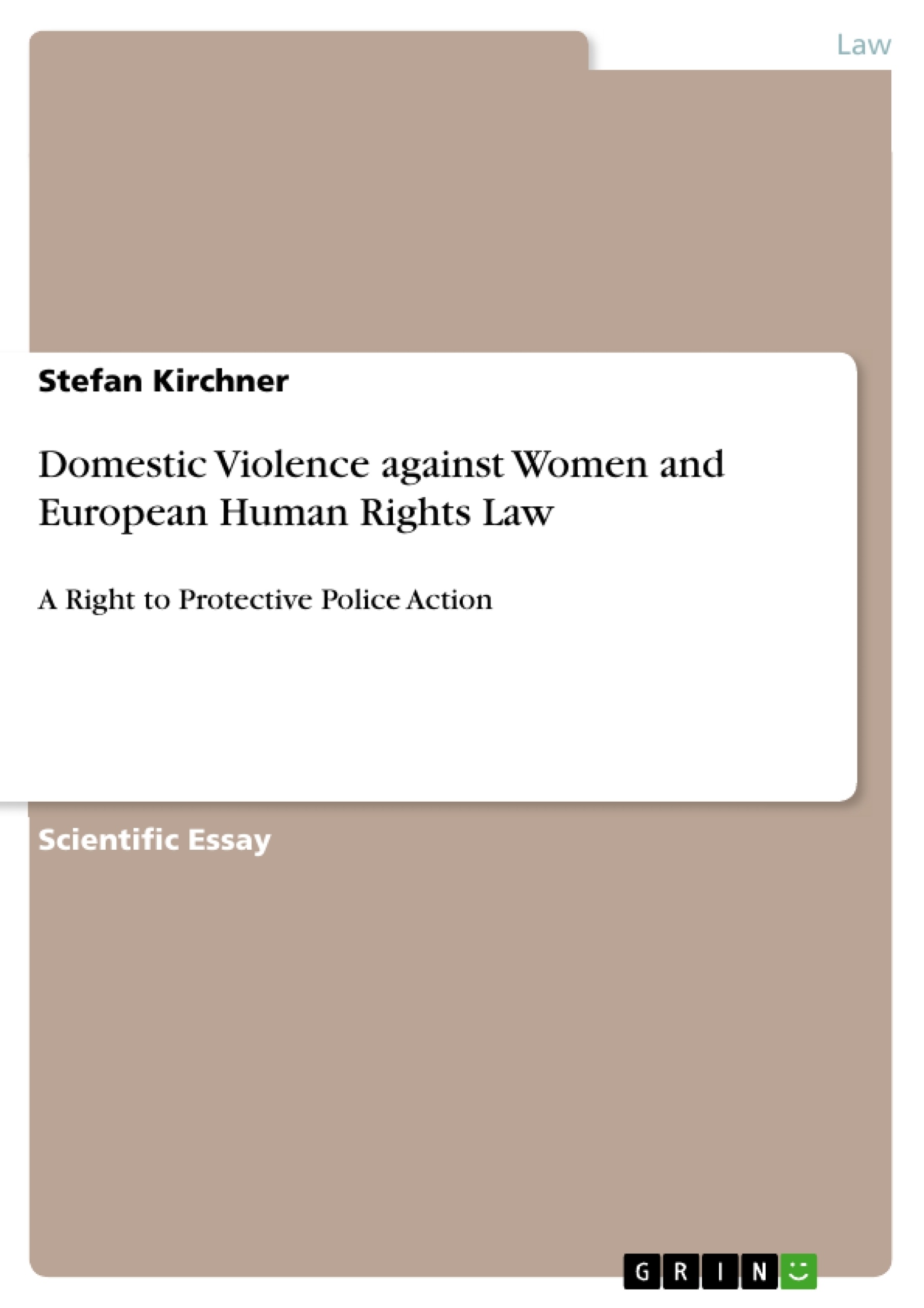Domestic violence against women remains a major problem which often is off the radar screen of public authorities as dismissive attitudes towards women persist among those working for local security forces (which often are male-dominated) and - for a wide range of reasons, including in particular fear of further violence against the victim or children - many cases are not reported. The risk of underreporting makes it necessary for authorities to be particularly vigilant and sensitive to situations which are threatening for women.
In this research article it will be shown that the European Convention on Human Rights can provide an effective legal tool to ensure that the authorities take this positive human rights obligation seriously.
Inhaltsverzeichnis (Table of Contents)
- Introduction
- A Justification of Human Rights Interference with Traditional Attitudes towards Women
- The Right to Life
- Positive Obligations to Protect Life
Zielsetzung und Themenschwerpunkte (Objectives and Key Themes)
This article examines the right of women to protective police action in cases of domestic violence, arguing that the European Convention on Human Rights (ECHR 1950) imposes a positive obligation on states to protect women from such violence.
- The prevalence of domestic violence against women and its underreporting
- The need for cultural shifts in attitudes towards women and violence
- The positive obligations of states under the ECHR to protect human life
- The specific obligations of states to protect women from domestic violence
- The role of law enforcement in preventing and responding to domestic violence
Zusammenfassung der Kapitel (Chapter Summaries)
- Introduction: This chapter introduces the issue of domestic violence against women, highlighting its prevalence and the challenges in addressing it. It emphasizes the need for authorities to be vigilant and sensitive to situations threatening women, particularly in contexts where underreporting is prevalent. The Istanbul Convention and the case of Halime Kılıç v Turkey are introduced as examples of ongoing efforts and challenges related to protecting women from domestic violence.
- A Justification of Human Rights Interference with Traditional Attitudes towards Women: This chapter explores the potential for international human rights law to challenge traditional attitudes towards women that condone violence. It emphasizes the need for cultural change and the importance of recognizing the universal applicability of human rights, regardless of cultural variations.
- The Right to Life: This chapter examines the state's obligations to protect human life under Article 2 of the ECHR. It argues that the right to life includes positive obligations, including preventive measures, to protect individuals from threats to their lives. The case of Rantsev v. Cyprus and Russia is cited as an example of this obligation.
Schlüsselwörter (Keywords)
Domestic violence, human rights, women's rights, European Convention on Human Rights (ECHR), Istanbul Convention, positive obligations, protective police action, cultural attitudes, legal frameworks, state responsibility, prevention, intervention.
- Quote paper
- Dr. Stefan Kirchner (Author), 2015, Domestic Violence against Women and European Human Rights Law, Munich, GRIN Verlag, https://www.grin.com/document/295303



